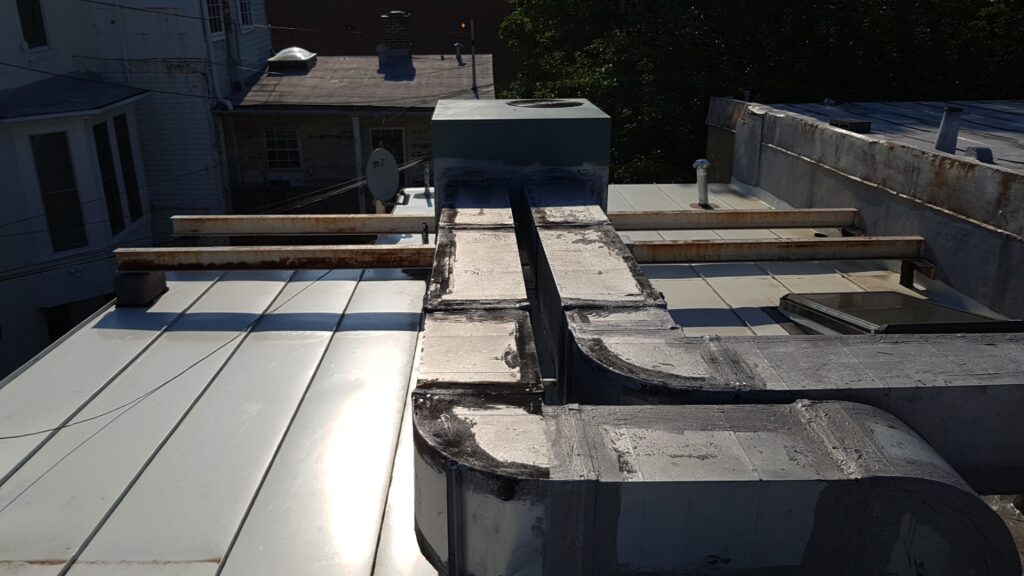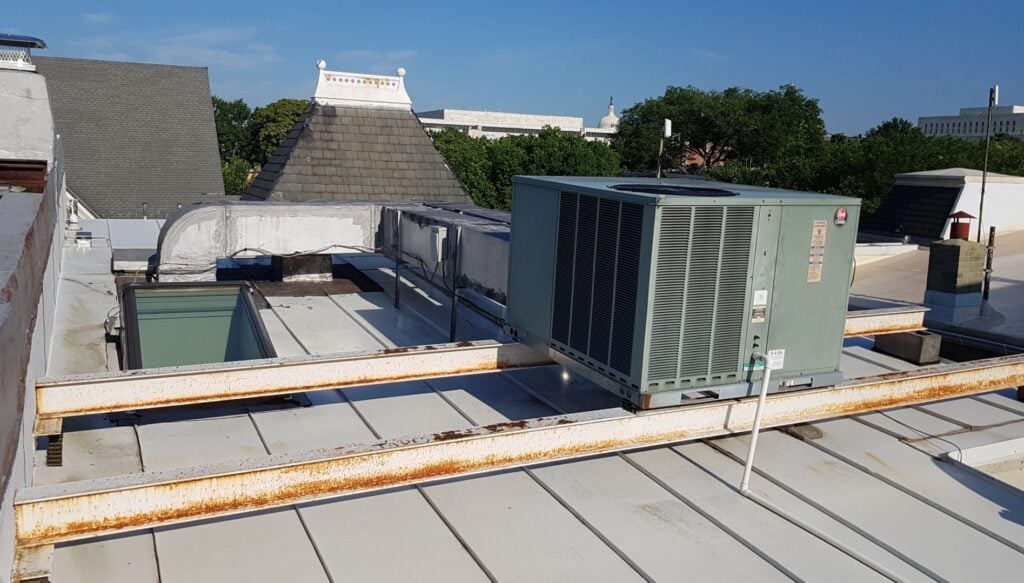The ultimate rooftop HVAC equipment guide – Explore your options today
Rooftop HVAC equipment is common on historic buildings in Washington, DC. In many cases, installing the mechanical equipment on the rooftop makes it easier to install the air distribution system on the interior of the house. For example in the case of the image below, this mechanical system serves the top floors of the building and does not require an internal closet.

In this case the unit is large and heavy. Metal beams have been used to transfer the weight so that it is bearing on the side demising walls. The side demising walls are made of solid historic brick masonry and can support this load. The roof deck directly below the HVAC unit is not strong enough to support the weight of the unit by itself, without sagging and failing over time.
Rooftop units do help to save interior space, as well using the rooftop can limit the amount of bulkheads required for branch ducting on the interior of the building.
Nonetheless, while rooftop mechanical systems can help in one way they also have more maintenance and can cause other issues. Some of the most common associated issues follow in the list below.
1. Solar gain.
2. Duct joint leaks.
3. Increased condensation.
4. Access challenges for serviceability.
5. Increased rooftop penetrations.
6. Load path bearing and mounting issues
7. Ultra violet protection required for cabling and wiring

Learn more about other type of rooftop equipment and challenges that rooftop equipment imposes on a roof membrane from another article in our encyclopedia at the following link:
